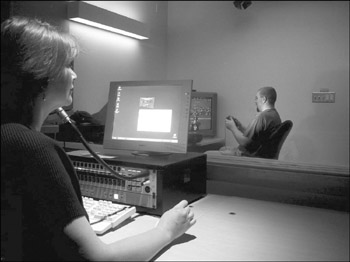Conclusion
|
| < Day Day Up > |
|
Is Your Game Accessible?
The final aspect to refining your game is making sure that it is accessible for the intended players. Can players in Peoria pick up your game and play, without any help from you and, realistically, without much help from the directions?
Accessibility is a strange paradox for the designer, because the better you understand your own game, the less able you are to anticipate problems that players may have in encountering it for the first time. Testing for accessibility is related to testing for usability. The difference is really who is doing the testing. Usability tests are generally done by usability engineers, in usability labs. We highly encourage you to utilize such a group if you or your publisher has access to them.
Usability engineers are generally trained psychologists or researchers whose focus is on testing and evaluating how users interact with various products. The general software industry has incorporated usability testing into its product cycle for years. The game industry lags far behind, although several large publishers, such as Microsoft, now have impressive internal groups dedicated to usability testing for games.

Figure 10.14: Microsoft playtesting lab
Multiple participants are playing games, each at their own station. Stations have partitions between them and headphones to minimize distractions. This is done so that one participant’s experience doesn’t affect another’s. Each participant’s opinions and preferences are collected via a web-based questionnaire on the monitors at each station. (Photo by Kyle Drexel.)
Professional usability labs are often set up with sophisticated recording equipment, allowing the researchers to insert a close-up view of the participant’s hands on the controls—keyboard and mouse, or console controller—within a shot of the main interface. Sometimes another camera shows the participant’s facial responses, and her voice talking out loud about what she is thinking is recorded over the sound of the product. The researchers usually sit behind one-way glass with the designers and producers of the product, communicating with the participant via intercom.
The researchers prepare a test script for the session, which asks the participant to walk through a number of areas in the product, or complete a set of tasks. Data on how successful participants are in completing these tasks and an evaluation of how critically any findings will impact the product are compiled in a report.
When we ask you to test for accessibility in your game, we’re basically asking you to do a layman’s usability test. By now, you have probably playtested your game with quite a few different people. Unfortunately, these people are now disqualified for your accessibility testing. The right people to test for accessibility are:
-
Part of your target market
-
Objective (not friends or relatives)
-
Have never played your game
You’ll need a fair sized group: Three to five people in each segment of your market (if there is more than one) are sufficient. Eight is preferred.
To make things go smoothly and to get the most out of the session, you need to identify the most critical areas of your game—your list will probably include starting a game, and some of the more critical choices or features. Now, create a script you can use to get the participants to these critical areas and present them with tasks that will give you insight as to how they are working. The script doesn’t have to be elaborate—it is to help you keep the session on track with as little fumbling and forgetting as possible. You want the participants concentrating on your game, not on you.

Figure 10.15: Microsoft usability lab
A participant (background, on the right) is playing a game. In the foreground, a user-testing specialist is observing the participant play the game in an adjacent room, separated by one-way glass. The one-way glass allows the user-testing specialist and development team members to discuss the game and participant behaviors without being overheard by the participant. (Photo by Kyle Drexel.)
Unless your game demands a multiplayer environment, it’s best to do this type of testing one on one. You want to see where people are stumbling or guessing, and people sometimes try to hide that, or they copy from a neighbor in a group. If you have to have participants in the same room during a test, explain to them that they shouldn’t help each other with the tasks.
You may want to have a friend help you out, if you can’t record the session, by taking notes while you walk through the script with the participant. Have them sit out of the participant’s peripheral view, to lessen distraction. Once you’ve run several, you will undoubtedly begin to see a pattern—you may be surprised to learn that your game is not as accessible as you believed. The example of the first few minutes of Halo, shows how easy it is for game designers to miss potential areas of confusion, simply because they are so familiar with the game. Just remember that participants in a test like this are never “wrong.” As tempting as it may be to believe that a feature is “obvious,” your opinions don’t count in this type of testing. If your players can’t play, there is no game.
Identify the areas that are causing problems, make revisions, and do another series of tests. Continue this until you are satisfied that a majority of your target players can access the most critical areas of your game. In a perfect world, you could test every aspect of your game for accessibility, but you probably won’t have the time or resources to do it. What you can do, is make the game easy to get into, easy to understand, and fun to play.
Exercise 10.10: Usability Testing
Conduct a set of usability tests for your original game prototype as described previously:
-
Write a script for a usability test in which you focus on critical tasks like starting a game, understanding objectives, making key choices, etc.;
-
Recruit a group of new testers who have not played your game before.
-
Conduct the tests and analyze the results. Come up with three ideas to improve your game’s usability.
|
| < Day Day Up > |
|
EAN: 2147483647
Pages: 162